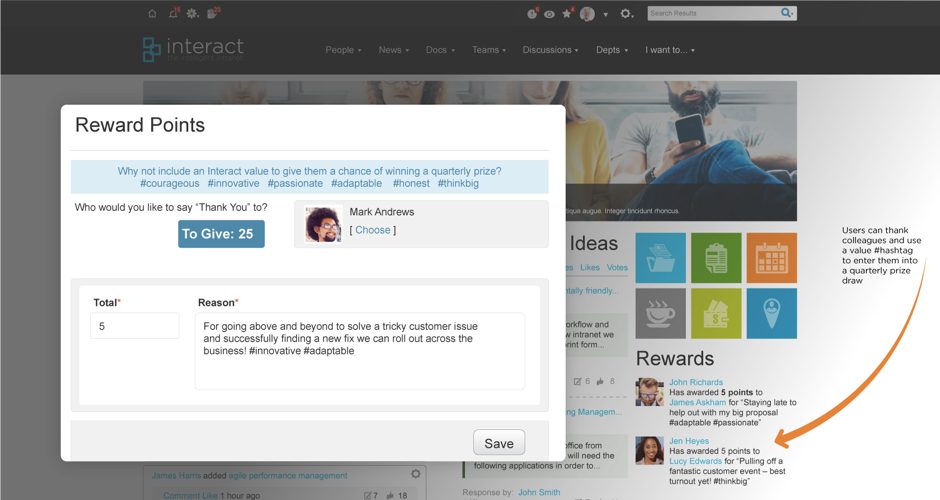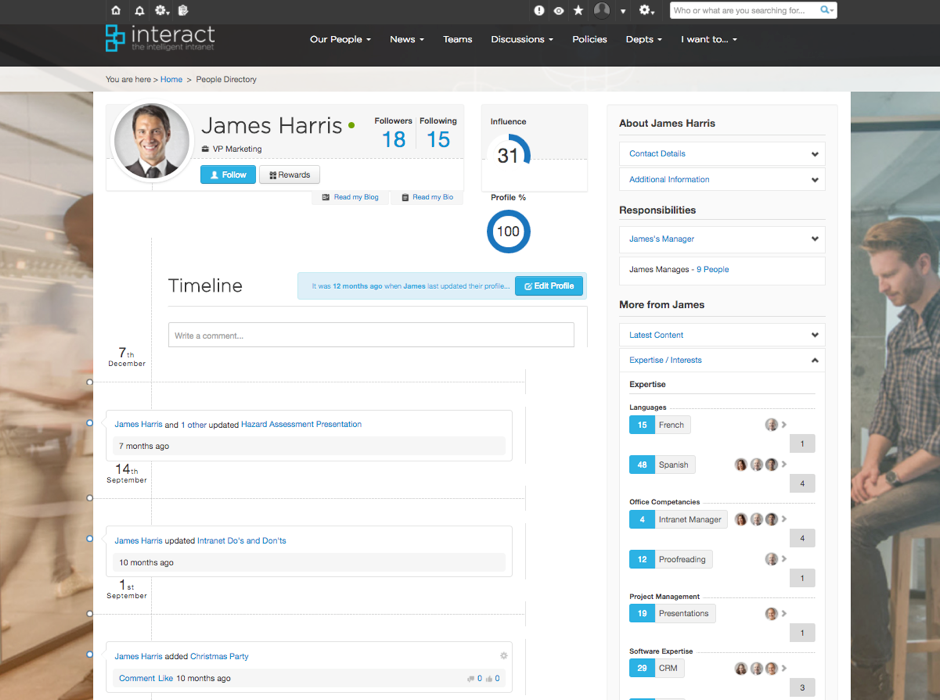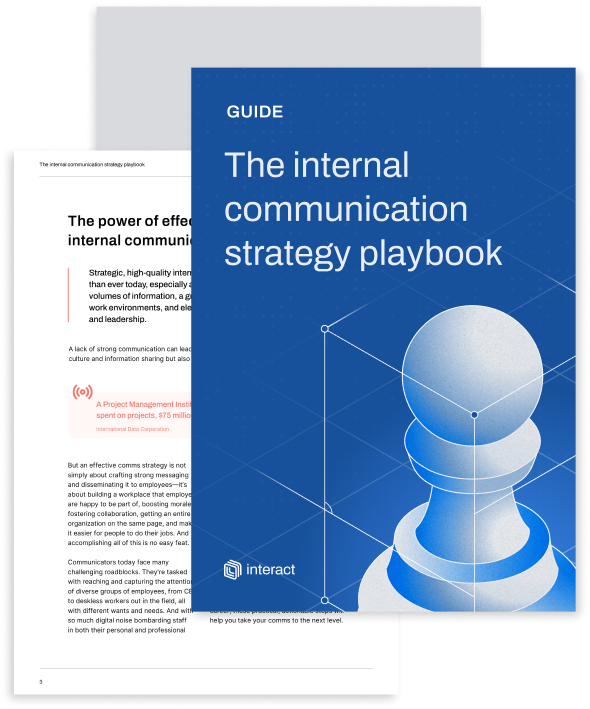Gamification is a rising buzzword and trend in business, but is it just the latest ‘fad’ or can it deliver real value for business?
Though it’s been on the scene since 2010, gamification has matured and evolved. New and exciting ways to interact with our content are being introduced every day. Internal communicators also face more pressure than ever to get their message through.
Gamification appears to offer an answer. Enterprises ranging from Google and Deloitte through to IBM and Salesforce have already reported success bringing gaming to their internal processes. But I’m more interested in how those of us lower down the food chain – and without the same $$$ budgets – can leverage gamification effectively, without the dangers of it becoming ‘lame’, ‘tacky’ or simply ‘trying too hard’.
Can gamification principles be used to transform and accelerate our IC efforts?
Free ebook – 14 steps to great internal communication
What is gamification?
Gamification is the use of game design elements, such as scoring, rewards or competition with others, in non-game contexts.
It’s worth expanding on this definition when considering its use internally. For business, gamification focuses on engaging people and creating behavioral change.
Using game design, competitiveness, loyalty and other behavioral economics, business leaders can leverage gamification to encourage interaction and understanding of business information or processes -bringing that content to life, in a way that sticks.
Or to put it another way, gamification can be used to make the boring, mundane or tricky stuff into something fun and rewarding.

Gaming is widespread in the consumer environment, and it’s this fact that makes gamification such a (potentially) successful tool. Like social media, it is intuitive and familiar – particularly to the growing Millennial and Gen X demographic. As these generations enter the workplace with the expectation of similar digital experiences as they have in their personal lives, there’s also an argument for its place in long-term internal comms strategy.
Here’s one unique example: the US Army developed ‘America’s Army’, a gamified promotional and recruitment tool. Candidates interested in enrolling can download and play the game for free – a perhaps controversial yet effective way to build awareness (with some uncanny likenesses to Call of Duty.)
Here, I look at 5 top-level business objectives that can be supported with the use of gamification.
#1 Embedding business values and improving employee engagement
Business vision and values can’t simply be created by management and pushed out, in hopes that they’ll catch on. So, how do you create company values that your employees will then live and breathe ? How do you keep your employees engaged with that vision and your business as a whole? Establishing your culture is an ongoing process – and gamification can play a key role.
It’s something built into the very functionality of Interact, and used successfully by our own team. Rewards on a company intranet are a powerful way to build a culture of recognition, celebrate individual success, and keep company values ‘front of mind’.
At Interact, each employee is assigned a monthly ‘quota’ of virtual reward currency – we call them donuts – that they can award to their peers. It’s a way to say, ‘thank you’, or ‘good job’ to colleagues, or for managers to award recognition to employees.
For an added twist, we link our rewards process to our core company values. Add a #companyvalue when giving away your donuts, and that individual gets entered into a quarterly prize draw. At the end of the quarter, the top 5 for #values are named and some of their rewards and recognition are cited – with the whole business given an opportunity to vote for their ‘Interact-er of the Quarter’.

Like any social platform, those tokens of recognition are public and transparent. It’s invaluable to build a virtual culture; a growing concern for those with globally dispersed offices or remote employees. The rewards are both extrinsic – once enough donuts are collected, you can exchange them for a tangible reward from Amazon – and intrinsic, given the sense of accomplishment, achievement and social validation.
Best of all, it keeps those values constantly visible, front of mind, embedded into the everyday processes of our company.
#2 Driving adoption and understanding of new tools, applications, processes
Technology defines the workplace. We now have tens, hundreds, even thousands of different applications and tools within any given organization – all designed to help us do our jobs better.
Those tools are also constantly evolving and changing. Gone are the days when Microsoft would launch a new Office Suite disk compilation every 3-4 years (who recalls the joys of Windows 95, 97, 2000, XP, 2003, 2007…) – now, thanks to cloud-based applications, those updates are instant and continuous.
Keeping employees upskilled on all these applications can be a challenge. With each update, how can we be sure we’re getting the most out of technology? Are we continuing to be unwittingly inefficient, as we know no better?
We learn best by doing. Introducing gamification into technology adoption can be a powerful way to get employees immersed in their new tools – and also a great approach to troubleshooting or ‘testing’ those tools in real-life situations.
This doesn’t necessary require complicated gaming design or processes – just a touch of creativity.
For example, creating a ‘treasure hunt’ competition following the launch of your company intranet gets employees actively learning how to use the platform. Tailoring the treasure hunt to their day-to-day roles – challenging someone to book a leave of absence or a resource, to submit an expenses form or find someone who speaks German – not only increases their understanding, but their buy-in to the tool and how it can work for them.
Free ebook – 14 steps to great internal communication
Our favorite example is by MHS Homes, who used gamification in the form of a fact-finding treasure hunt to get users using their new People Directory – find out about it here.
#3 Improve user engagement
Low adoption is the death sentence of any internal comms initiative – digital, or otherwise.
It’s our job to get our message through and ensure employees are engaging with what we’re sending out. However, as any internal comms professional will testify, getting employees to like, share, comment, contribute or even simply acknowledge communications can be an uphill struggle. Sometimes, it’s a game of pot luck.
How can gamification help?
One of the best commercial examples of this scenario was the original concept of LinkedIn. You receive a profile completion score, and ‘badges’ can be added to your profile to demonstrate your skills, training, recommendations and more. Even now, the number of connections is a dominant feature and ‘badge’ of social validation – an indication of influence and reach. On your individual profile, you can also gain insights into who has viewed your profile and posts. It’s an approach Interact has emulated and developed on within our own People Directory.

(Within Interact’s People Directory, users are assigned a profile score based on the completeness of their profile, alongside an ‘influence score’ that uses information based on their social interactions on the platform.)
Springing off this idea, gamification companies such as Badgeville are using the idea of social reputation and just a hint of competition to configure any goal into a gamified incentive.
As internal communicators, we can play on this to increase user engagement, particularly on internal communication platforms or intranets. By awarding badges or scores depending on key comms KPIs – whether that’s the completeness of a profile, the level of influence as measured by contributions or more – we give users an intrinsic incentive to get involved.
“While I personally have never cared too much for posting an accomplishment through social media, “writes guest blogger Steven Laird, a Systems Integration Consultant at Accenture, “I have found myself twiddling on my own Accenture profile and seeing how I can complete certification trainings or volunteer events in order to get the added bonus of a virtual badge.
“Although badges run the risk of sapping intrinsic motivation and creating gaming/manipulation of the system behavior, I have found that these badges can actually enhance intrinsic motivation, serve as a pseudo resume, and expose me to other skills/interests that I already have a liking towards. “(Source: Yu-kai Chou: Gamification & Behavioral Design)
#4 Transform L&D – particularly for business-critical information or processes
There’s an unfortunate paradox in internal comms. Sometimes, the most important information is also the most boring, dry, or unengaging. Or, it’s the most difficult to communicate.
So, while it’s essential that our employees know and understand health and safety procedures, information security or the process for whistleblowing, grievance or reporting discrimination, it’s actually hard to do in practice.
Gamification may not be appropriate for every situation. However, developed and delivered carefully, it can change how employees engage with content. Rather than reading a document of ‘how to’, or sitting through a briefing, gamification can be used to apply that learning to real-life scenarios, or practice techniques in order to build confidence.
One of the greatest examples I’ve found of this is a case study of travel tech company Amadeus, on Simply Communicate.
The company has leveraged gamification to address one of its most challenging scenarios: empowering junior staff, such as co-pilots, to give feedback to colleagues who are considerably more senior. In the case of a flight, the fear of speaking up or failure to communicate effectively can literally put lives at risk. Co-pilots use the gamified training tool to respond to a variety of different scenarios and situations, understanding how to communicate with seniors and manage different situations.
In the case study, Simply Communicate describe the potential impact:
“The scenarios themselves are based on real life accidents such as the commander of the Asiana Airlines Co. jet that crashed approaching San Francisco in July 2013. He failed to respond to as many as four separate verbal warnings from a co-pilot that the jet was descending too quickly. The co-pilot was considerably younger and less experienced.”
The possibilities are, potentially, endless. I’ve heard great stories about gamification for recruitment – exercised by pwc – through to discrimination or customer service training. It really can transform how staff engage with content.
#5 Increase productivity, efficiency and business outcomes
Who doesn’t respond to a touch of competition?
One of the most common uses of gamification is benchmarking and incentivizing staff, particularly those operating in sales or customer service.
Individual and team dashboards can be created, with employees awarded badges, points or other forms of recognition for their efforts. This taps into motivation triggers that go beyond monetary rewards alone: for example, status, recognition and appreciation.
What’s more, gamification can be used to give employees something they now expect in an always-on digital environment: real-time feedback and insights. Rather than waiting for traditional sales figures on spreadsheets, or perhaps monthly or annual reviews, employees can understand where they stand and how – or where – to focus their efforts and improve.
This has a direct impact on the experience they deliver for customers. Employees who are motivated, focused and engaged with their own performance are more likely to score highly for customer satisfaction.
Here, Bunchball explain the impact gamification can have on efficiency and productivity in more detail.
Bringing gamification into the workplace
As I’ve discussed, gamification can – and should – play a leading role in the way we motivate, train and engage our employees. However, it also needs to come with a word of warning.
Gamification of the sake of gamification is a fad. Simply adding points and badges in a bid to make boring things more interesting is a short-term solution and in some ways, it is offensive to the intelligence of our staff. We can’t buy their engagement by sticking a ‘great work!’ sticker on their work.
To work effectively, it needs a long-term approach. Securing senior level buy-in and designing business processes in a way that makes them intrinsically rewarding is the only gamification can be truly successful. When thought through, gamification can deliver tangible results. So, before you play, make sure the game is worth it.


